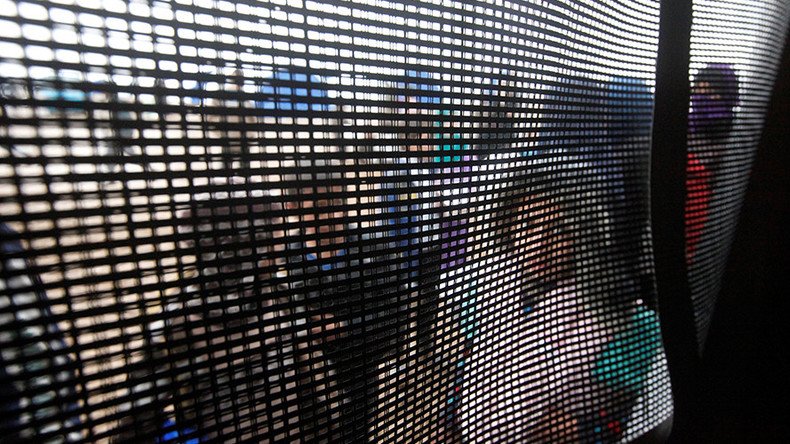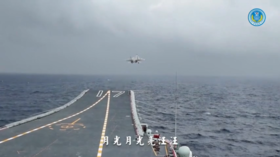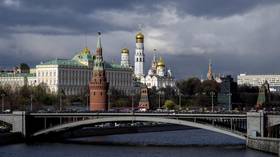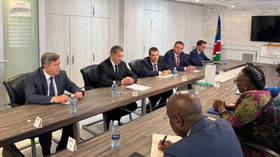Mortar fire from Iraqi forces and ISIS: Mosul civilians at serious risk – HRW

Numerous attacks, including heavy artillery and mortar fire from Iraqi forces and ISIS, are killing civilians in Mosul, says Belkis Wille, senior Iraq researcher at Human Rights Watch (HRW). The huge refugee influx from Mosul will continue, she adds.
Around 4,000 people escape the embattled Iraqi city of Mosul on a daily basis, according to the UN Refugee Agency.
Almost 30,000 Iraqis have been displaced from Mosul in less than a week, as the US-backed Iraqi forces have launched an offensive to recapture the densely populated western part of the city from ISIS. The eastern side of Mosul was captured by Iraqi forces in January after 100 days of fighting.
‘We’re scared both of ISIS & liberators’: RT meets refugees who escaped #Mosul crossfire (EXCLUSIVE) https://t.co/gqLzjwZJpnpic.twitter.com/ziDVsI2yLL
— RT (@RT_com) 4 марта 2017 г.
According to UN estimates, over 190,000 Iraqis have been displaced from Mosul and surrounding areas since October 2016, when the military operation was launched to seize back the city, which has been in the hands of ISIS since 2014. About 750,000 people are believed to still be trapped in the city.
RT: Will the humanitarian organizations be able to process the influx of refugees from Mosul?
Belkis Wille: There has been a massive spike in the last few days. The real concern among the humanitarian community is that this spike is going to continue and perhaps even increase. There is a limit at the moment inside the camps on how many people can be accommodated. The entire humanitarian community is working as quickly as possible to make more space. But of course building an entirely new safe camp takes time. There is real worry about all these people coming out and where they can stay safely.
A deeper look at how the battle for #Mosul#Iraq is affecting civilians on the ground https://t.co/pjgisdent2https://t.co/Uq1buvfKOA
— Belkis Wille (@belkiswille) 3 марта 2017 г.
RT: Is the US-led coalition doing enough to prevent civilian casualties in Mosul, as we heard from some of the refugees’ accounts of civilian deaths from air strikes? What else could be done to protect the civilians there?
BW: Yes, the civilians inside the city – those that haven’t been able to escape, or those who have chosen to remain – are at serious risk. There are civilians, as you said, being killed by airstrikes. There are also a numerous other attacks that are killing civilians, including mortar fire from the Iraqi forces, mortar fire by ISIS, and heavy artillery in the city. It’s hard to see what civilians can do to protect themselves, because ISIS fighters are everywhere, in all neighborhoods.
Growing toll: 201 civilians killed, 250 more injured in Mosul province in February – UN https://t.co/jRtjHaPzcx
— RT (@RT_com) 2 марта 2017 г.
RT: What about established camps for the refugees? Are humanitarian organizations getting enough help, including financially?
BW: As Human Rights Watch, I can’t speak directly on behalf of the humanitarian community. However, my understanding is that the money is coming in. There is enough support from the international community on the most part... but safety is the real concern. There have been multiple attacks that have affected humanitarian workers. Most recently, ISIS has been using drones – homemade grenade dropping drones. And those have affected many civilian gatherings, including humanitarian distribution, where aid workers and civilians... were injured. So there is a real concern about security when carrying out humanitarian activities.
An investigation into the car bombs, airstrikes, mortar fire killing Mosul's civilians https://t.co/pjgisdent2
— Belkis Wille (@belkiswille) 3 марта 2017 г.
RT: The big operation to get ISIS militants out of Mosul has been going on for at least couple of months now. Is progress being made?
BW: There was quite quick progress at the beginning of the operation in late October. Things slowed down, but then picked up after Christmas. That was how the Iraqi forces were able to retake all of the east of the city. Now that we’re left with the west, it does look like the fighting is going to be much more difficult, it is going to take much longer, and the Iraqi forces are going to lose a lot more men. It looks like ISIS has really been willing more easily to give up the east, but it is firmly entrenched in the west in the old city by the river. They are going to really fight until the end.
The statements, views and opinions expressed in this column are solely those of the author and do not necessarily represent those of RT.













